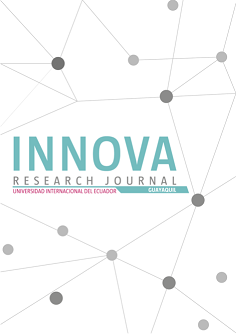El sector licorero del Ecuador frente a las medidas tributarias impuestas
Main Article Content
Abstract
This research analysis the liquor sector which represents an important item of the Ecuadorian economy, it is composed of importers and local producers who in many cases need the imported goods for their production. All the states seek to improve their tax collection for the execution of works or improvement of the services delivered to the citizenship, whit this purpose, Ecuador Government applied a series of taxes as VAT value added tax, special consumption tax ICE , tariffs on imports, safeguards, imposed on IR income, among others. The present study focused on the import sector by the series of tax measures applied since 2009 to 2015, and analyze the performance of imports from its application. Tariffs, ICE, VAT, safeguards have reduced imports and affected the sale price of beverages and consumption in establishments.
Downloads
Article Details
COPYRIGHT NOTICE
Authors who publish in the INNOVA Research Journal keeps copyright and guarantee the journal the right to be the first publication of the work under the Creative Commons License, Attribution-Non-Commercial 4.0 International (CC BY-NC 4.0). They can be copied, used, disseminated, transmitted and publicly exhibited, provided that: a) the authorship and original source of their publication (magazine, publisher, URL and DOI of the work) is cited; b) are not used for commercial purposes; c) the existence and specifications of this license of use are mentioned.
References
Asamblea Nacional. (2011). Ley Orgánica de Régimen Tributario Interno. Registro Oficial. Quito, Pichincha: Registro Oficial.
Asamblea Nacional. (Marzo de 2015). Resolución No. 11 -2015. Quito: Registro Oficial.
Asamblea Nacional del Ecuador. (29 de Diciembre de 2010). Código Orgánico de Producción, Comercio en Inversiones. Registro Oficial. Quito, Pichincha , Ecuador: Registro Oficial.
Banco Central del Ecuador. (Diciembre de 2012; 2013; 2014; 2015). Banco Central del Ecuador.Recuperado el 6 de junio de 2016, de https://www.bce.fin.ec/comercioExteriorBi/comercio/consultaTotXNandinaConGraficoV2.jsp.
Hernandez Sampieri, R., Fernandez Collado, C., & Baptista Lucio, M. (2014). Metodología de la Investigación.México: McGraw-Hill.
Hill, C. (2011). Negocios Internacionales .México: Mc Graw Hill.
Islam, R., Mohamad-Ismail, S., & Siwar, C. (2010). Science Publications. Obtenido de American Journal of Environmental Sciences: http://thescipub.com/PDF/ajessp.2010.95.102.pdf.
Kee, H. L., Nicita, A., & Olarreaga, M. (2009). World Bank Group S.A. Obtenido de http://siteresources.worldbank.org/INTRES/Resources/469232-1107449512766/ecoj_2209.pdf.
Paul R. Krugman, M. O. (2006). Economía Internacional, teoría y política.Madrid: Perason.
Paz y Miño Cepeda, J. (2015). Historia de los Impuestos en el Ecuador.Quito: SRI-PUCE_THE.
Perez-Capotos Contreras, J. (2003). Los subsidios gubernamentales como prácticas desleales del comercio internacional. Revista de Derecho de la Pontificia Universidad Católica de Valparaiso, 403-422.
Sarfati, G. (Mayo de 1998). European Integration online Papers. Recuperado el 2016, de http://eiop.or.at/eiop/texte/1998-002.htm.
Servicio de Rentas internas. (2012). Una nueva política fiscal para el Buen Vivir: La equidad como soporte del pacto fiscal.Quito: Abya-Yala.
Servicio de Rentas Internas. (Diciembre de 2013). Servicio de Rentas Internas.Recuperado el 6 de junio de 2016, de http://www.sri.gob.ec/web/guest/estadisticas-generales-de-recaudacionp_auth=q15CqwEA&p_p_id=busquedaEstadisticas_WAR_BibliotecaPortlet_INSTANCE_EVo6&p_p_lifecycle=1&p_p_state=normal&p_p_mode=view&p_p_col_id=column-1&p_p_col_count=2&_busquedaEstadisticas_.
Servicio Nacional de Aduanas. (abril de 2015). Resolución SENAE-DNG-2015-0185-RE. Resolución. Guayaquil, Guayas, Ecuador.
Sumner, D. A., Smith, V. H., & Rosson, C. P. (2015). Cite Seer X. Obtenido de http://citeseerx.ist.psu.edu/viewdoc/download;jsessionid=3951FB337EFCA797B9844267E3F279BF?doi=10.1.1.553.8355&rep=rep1&type=pdf.






